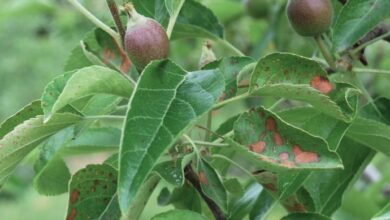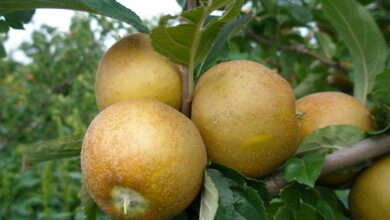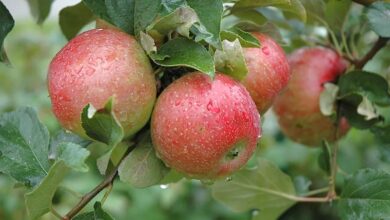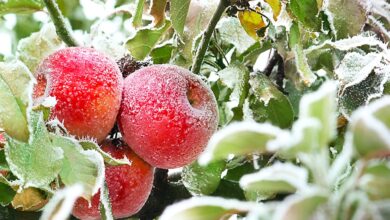What Do Brown Spots On Apples Mean and Is Frost Bad For Apples?
Brown Spots On Apples: Brown Spots On Apples Could Be Frost Rings
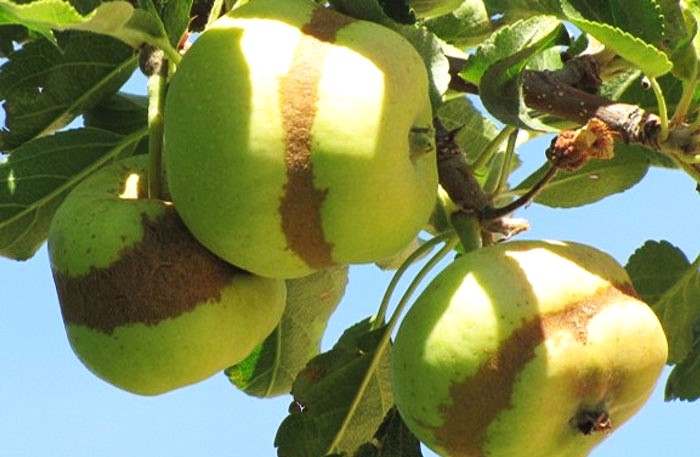
When someone talks about picking apples from their backyard fruit tree, what comes to mind? You’re not the only one who imagines a glossy, red (or green) globe with a glossy, smooth peel. It’s crucial to understand, though, that an apple with brown patches on the outside could taste just as good.
The presence of brown patches on apple skin does not necessarily indicate that the fruit should be thrown out, even though no one wants to bite into a rotten or infected fruit. Learn what produces this type of frost rings, also known as russeting, on apples by reading on.
Apple trees and frost
In order to cultivate apples, gardeners depend on the local average last-frost date. However, there is no assurance that fruit trees will not bloom until beyond that date. Actually, a lot of fruit trees blossom before the date that frost is free, and that frost might affect the quantity and quality of the fruit.
The degree of blossom development at the time of the frost will determine how much fruit is affected. As a bud, a fruit tree blossom is fairly resistant to frost, but as it grows into a flower, it becomes less resilient. For instance, apple blossoms may suffer damage if temperatures fall below 28 degrees Fahrenheit (-2 degrees Celsius), yet apple buds may withstand temperatures as low as 15 degrees Fahrenheit (-9 degrees Celsius).
Apples with brown spots
After a frost, you won’t notice issues with apple fruit right away, but as the fruit ripens, you might find scabby rings around the bottom. We call these frost rings. They are the product of the blossom frost that occurred when the apple tree was in full bloom and the fruits were still developing.
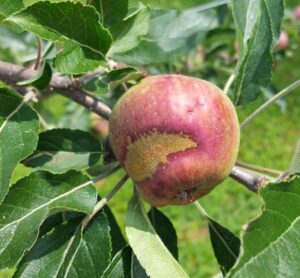
The fruit’s surface tissue was harmed by the low temperatures. The injury separates the fruit from the flesh as it becomes larger, forming a ring pattern beneath the fruit’s epidermis. The apple looks different because of this frost ring, but it tastes the same.
Apple Rusting
Changes in the color and texture of apple skin are sometimes known as apple russeting. Instead of referring to the frost phenomenon, the phrase describes the real change in appearance, when areas of the skin become darker and more russet. The fruit’s flavor and edibility are unaffected by the rough, discolored skin defect, such as frost ring.
In contrast to “frost ring,” “apple russeting” does not always imply frost. Damage to the apple’s epidermal cells is the source of this skin disease. Damage to the apple skin results in the development of phellogen, or wound-sealing tissue. As a result, the skin surface seems thin and corky.
Apple russeting can be brought on by a frost during the development of the apple blossom buds, just as frost ring. However, a number of stressors, including biological and physical ones, can also cause it. In addition to frost, these include rain, high humidity, and direct sunlight.
Chemical burns from surfactants, foliar fertilizers, pesticides like sulfur or captan fungicides, and the carbamates vydate and carbaryl can also cause apple russeting. However, infections like powdery mildew and any skin abrasion have also been linked to it.

